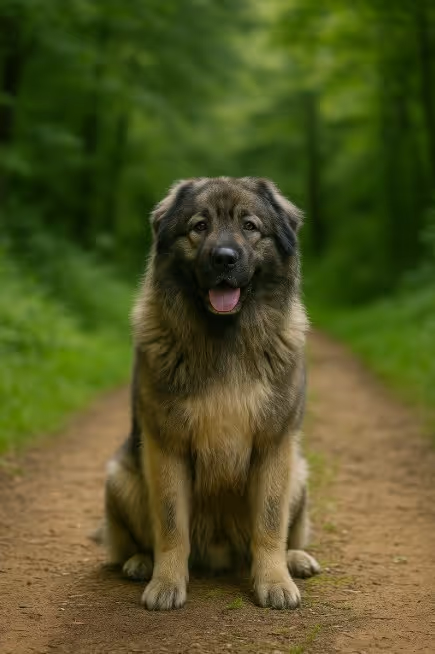The Caucasian Shepherd Dog is a massive, weatherproof livestock guardian from the Caucasus Mountains—calm and loving with family, naturally suspicious of strangers, and bred to stand their ground against predators. They thrive with experienced owners who provide early socialization, strict management, secure fencing, and daily structure. If you’re asking “Are Caucasian Shepherds good family dogs?”—yes, in knowledgeable homes. “Do Caucasian Shepherds shed?”—heavily, seasonally. “Are they hypoallergenic?”—no. Heat management and joint care are musts.

Originating across the Caucasus region (Georgia, Armenia, Azerbaijan, southern Russia), these dogs guarded flocks and homesteads from wolves, bears, and raiders. In the 20th century, types were gathered and standardized (often under “Caucasian Ovcharka”), emphasizing size, weatherproof coat, and fearless, territorial temperament. Today they are recognized by FCI (Group 2, Molossoid—Mountain type) and several North American registries (e.g., UKC; AKC FSS), kept as estate guardians and loyal companions in experienced hands.
A formidable, rectangular Molosser with dense double coat and heavy bone.
Low trimming, high de-shedding during coat blows.
Moderate, joint-friendly work; avoid heat and repetitive pounding.
Strong, independent, and handler-sensitive—clarity, consistency, and management are everything.
Grow slow; keep lean for joints and longevity.
A robust mountain guardian with size-related risks—health testing is essential.
Temperament, transparency, and support matter—so do bylaws/insurance.
Are Caucasian Shepherds good family dogs?
Yes—in experienced homes with early socialization, clear rules, and supervision due to size/guardian instincts.
Do Caucasian Shepherds shed a lot?
Yes—heavy seasonal shedding. Daily de-shedding during coat blow helps.
Are Caucasian Shepherds hypoallergenic?
No. They are not hypoallergenic.
How much exercise does a Caucasian Shepherd need?
About 45–75 minutes daily of low-impact walks, training, and enrichment.
Are Caucasian Shepherds good apartment dogs?
Generally not ideal—possible only with strong routines, secure management, and ample outdoor time.
Do Caucasian Shepherds drool?
Moderately—especially after drinking or exertion. Keep towels handy.
Can they live with other dogs?
Often dog-selective/territorial; careful introductions and management are essential.
Caucasian Shepherd vs Tibetan Mastiff—what’s different?
Both are guardian giants; Caucasians are typically heavier-boned, denser-coated mountain types with strong territoriality, while Tibetan Mastiffs are rangier with nocturnal patrol habits. Lines vary—meet breeders’ dogs.
What health tests should breeders do?
Hips/elbows, CAER eyes, and (as advised) cardiac/thyroid screening; discuss family history of bloat/GDV and orthopedic issues.
How do I manage visitors safely?
Use leashes, place/settle, gates, and rehearsed introductions; prioritize neutrality and never leave strangers unsupervised with the dog.